It may surprise you to learn that most new home buyers want a patio included in their new residence. For example, in 2022, of the roughly one million single-family homes started, 63.3 percent came with patios, according to construction industry source eyeonhousing.org. This number is up from 63 percent in 2021 and represents the seventh consecutive year when a new record was established.
Patio popularity partially came about as an unintended consequence of COVID concern.
After the pandemic forced families to hunker down and stay home, an interesting paradigm shift occurred. Instead of “going out” to restaurants, movies, or other popular entertainment destinations, many people decided to “go outside” in their own backyards. What they discovered was the pleasure of chillin’ and grillin’ outside on the patio.
What This Means for You — The “floor” of the largest room in the house is usually a brick or paver patio. Since brick requires little or no maintenance and will last for generations without needing to be replaced as wooden decks might, due to rot and weather damage, most homeowners choose brick. As patios gain more popularity, homeowners are considering a wide range of brick patterns to complement other features of the outdoor entertainment space.
For centuries, brick has been the “go-to” building material for home construction. With current manufacturing methods, the colors, styles, and textures of brick are dazzling, and a homeowner is only limited by his or her imagination. Click here and get some patio inspiration.
First Things First — 5 Questions to Ask
Before deciding on the type of brick or paver pattern to build for a patio, there are several questions homeowners should consider. Answers to these questions will suggest the pattern and color of the brick to be installed.
1. Does the patio include an outdoor fireplace and a conversation/media area?
If the patio has these features, they are usually the focal point of the space. Matching the style of the brick color, texture, or furnishings in this area should be taken into consideration when deciding the pattern of the patio floor. A builder, architect, or designer can help with this decision. Acme has a wide selection of indoor and outdoor fireplaces, including Isokern-Earthcore, Mason-Lite, and Stone Age Manufacturing.
2. Does the patio area include a pool?
The size and design of a pool will suggest the types of patio floor patterns. Again, builders and design specialists can suggest great pattern ideas to surround a pool.
3. How about other features such as water fountains or fire pits?
These features are very popular and change the flow of the layout of the patio area. Finding an appropriate brick patio pattern that complements these features is important for planning.
4. What about plants, flowerbeds, or gardens surrounding the patio?
The trend toward native, drought-resistant foliage has become an important design consideration for every outdoor entertainment space. The floor pattern and brick color should be chosen to blend with the plants surrounding the space.
5. What is the architectural style and color of the residence?
The patio space is an extension of the home and, as such, should reflect the style and color palette of the home’s exterior. The pattern of the patio surface should also be consistent with the home’s look and feel. With its rich color and low maintenance, brick is an excellent choice for homes in any climate. Here are ideas for brick colors and textures.
What’s Your Patio Pattern Preference?
Landscape architects, outdoor entertainment designers, and homeowners with a creative bent know there are just about as many patio flooring patterns as there are people who love to spend time in the great outdoors. According to the design website Home Stratosphere, here are the 12 most popular patterns for patio surfaces.
Each of these patterns is found on www.homestratospere.com and the home design site on Pinterest. While these patterns are complicated to install, a simple DIY patio instructions are found here.
Herringbone
For obvious reasons, this pattern is commonly called the “zigzag.” Diagonal rows of bricks alternate directions to create this traditional, formal design. The Herringbone pattern is also extremely popular for indoor wood and luxury vinyl plank flooring.
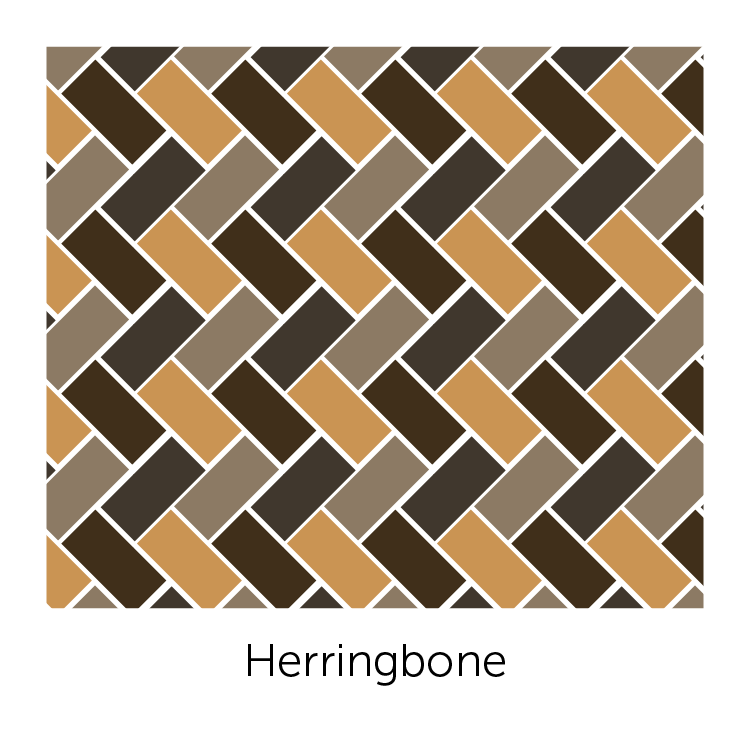
Jack-on-Jack or Stacked Bond
In this pattern, the brick is placed in even rows and columns, creating a regimented, symmetrical, and grid-like layout. It is great for a pool area. Setting bricks in such a fashion can help create the illusion or feeling of a larger space than what actually exists.
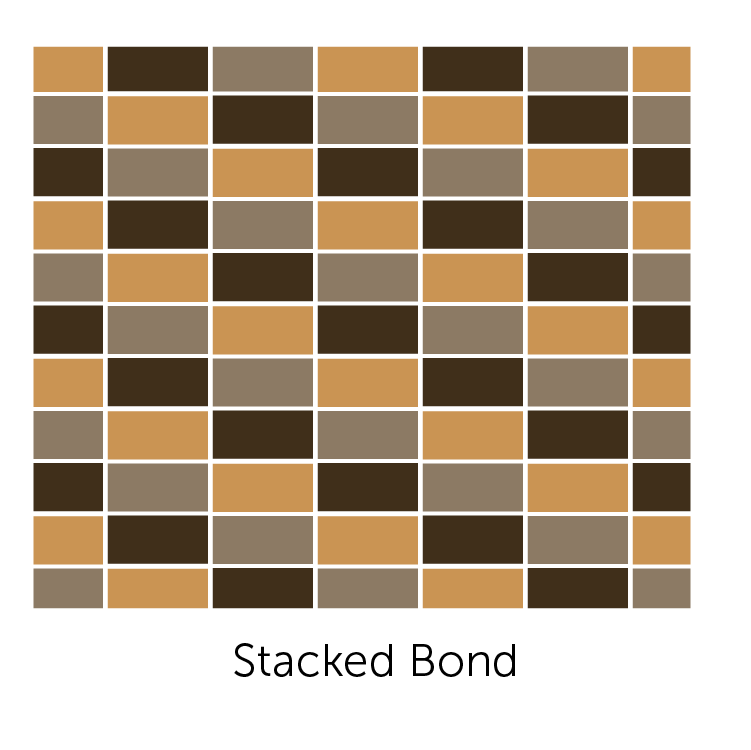
Pinwheel Brick Pattern
According to design website Spruce, “The pinwheel pattern will require some brick-cutting skills, but it is an interesting and great-looking pattern. It is a geometric representation of a basic pinwheel. At the center of each pinwheel shape is a half brick, which means you must make at least one cut for every two pinwheels.”

Running Bond
This is one of the most common patterns for patio spaces. The running bond consists of rows and rows of brick where the ends of the bricks in one course align with the centers of the bricks above and below them.

Basketweave
This is a very popular pattern where brick is laid horizontally and vertically in pairs to create the basket weave pattern. The basket weave layout works especially well on large patios because it breaks up large expanses.
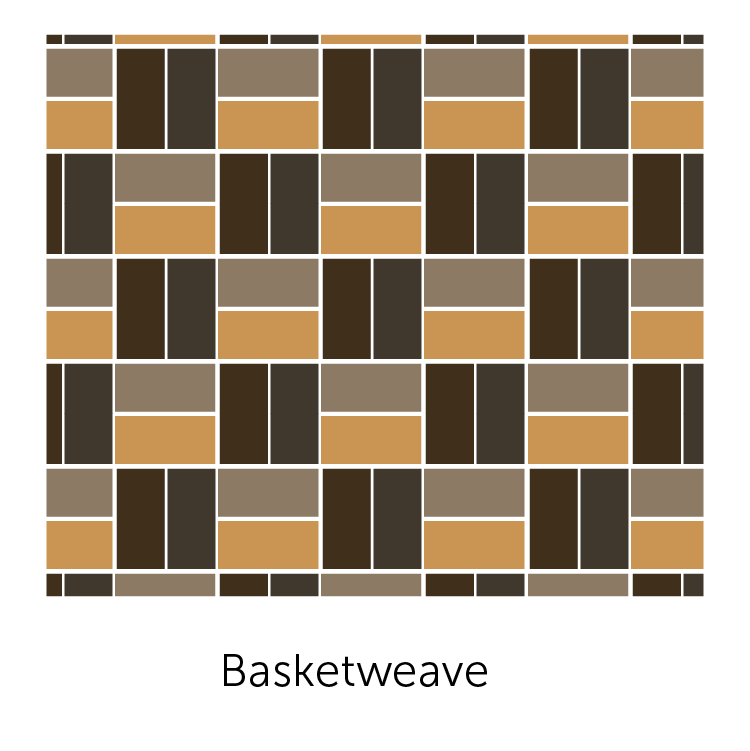
Whorled (circular)
Spruce notes that this patio pattern is “just one example of a very complex—and very time-consuming—brick pattern. It involves tricky, precise cuts on more than half of the bricks. The effect of complex patterns like this can be stunning, but the difficulty of installation makes it unsuitable for DIYers. Often, this highly decorative pattern is used as a centerpiece within a larger area made with a less complex pattern.
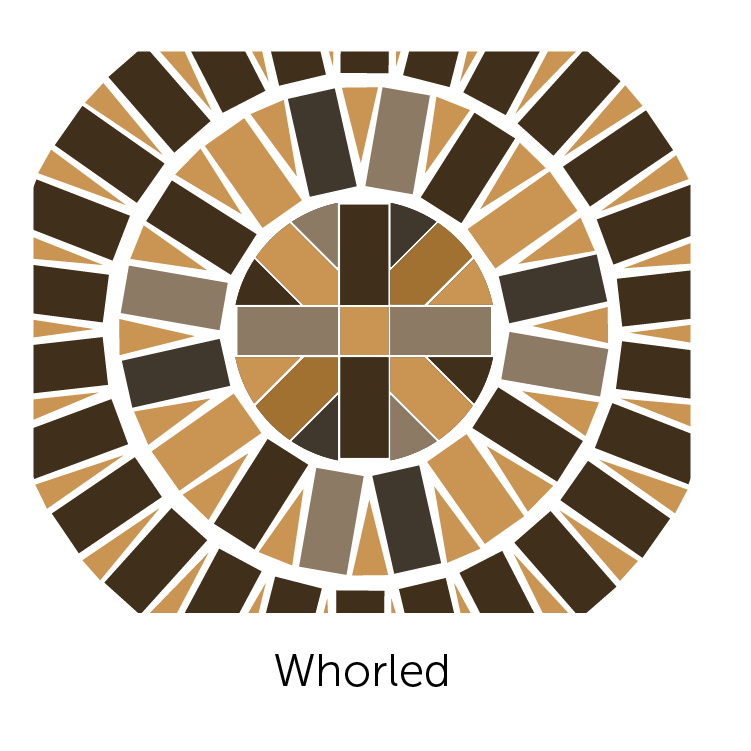
Grid
The grid brick pattern consists of square sections of brick set into a grid-like frame of wood timbers or other material, according to Spruce. The basketweave pattern is a classic choice for this treatment, but other straight-edged patterns also work well, such as jack-on-jack and even pinwheel.
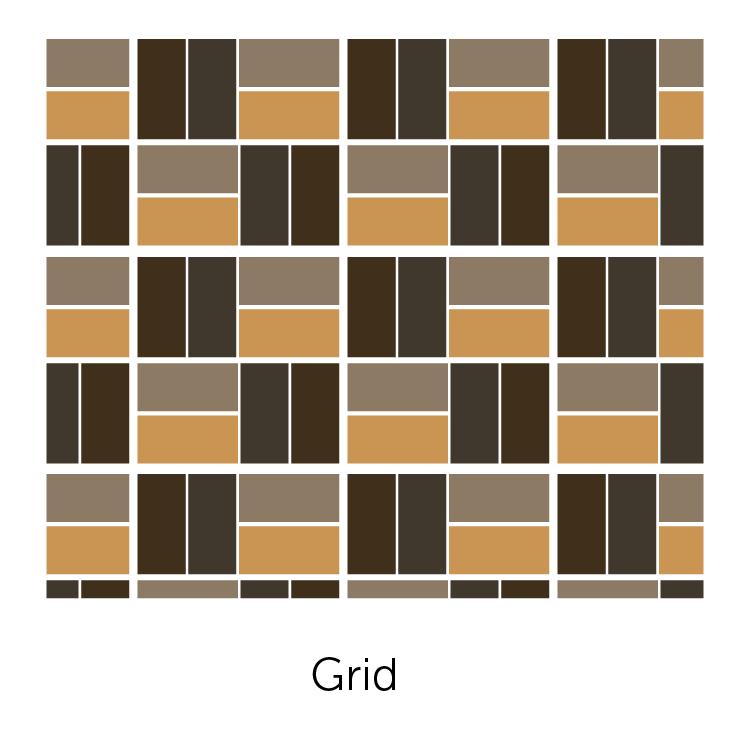
Boxed Basketweave
The boxed basketweave patio paver pattern resembles a woven basket and is created by alternating pavers in a perpendicular pattern. In most cases, this pattern involves two pavers laid vertically, and then two pavers are laid horizontally over the vertical pavers, creating a repeating pattern of horizontal and vertical rows.

Half-Basketweave
According to the design site Spruce, “The half-basket weave brick pattern is laid with two horizontal bricks butted against a single vertical brick. The relative positions of the three bricks in each grouping alternate from row to row. The visual effect is similar to that of the basic basketweave but slightly more complex.
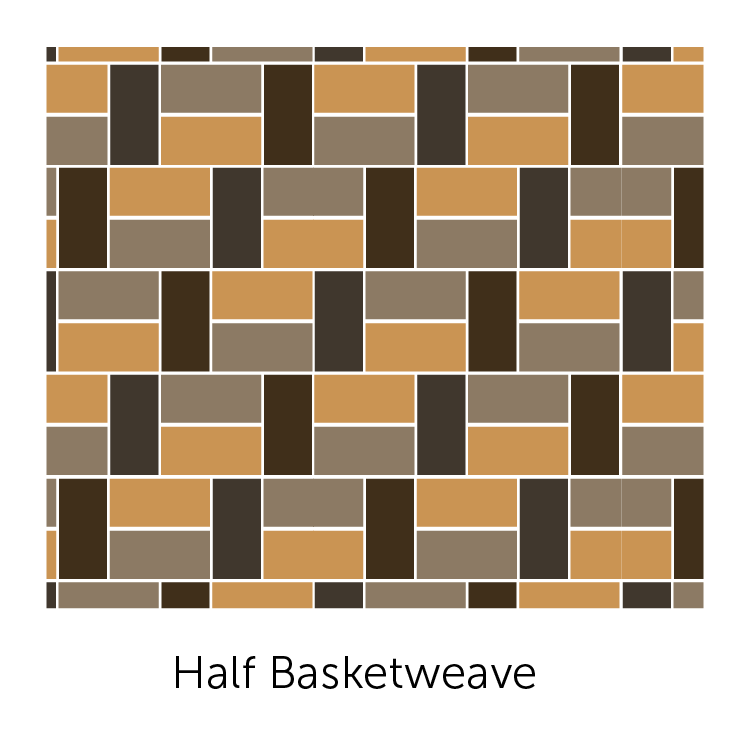
Single Basketweave
This pattern is like other basketweave patterns. Take a look at the illustration to see the difference.
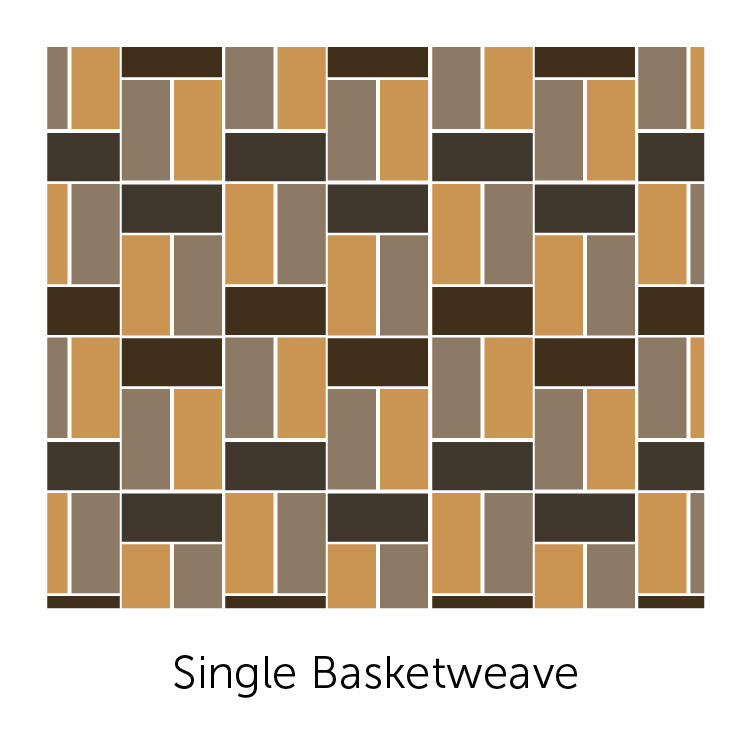
Flemish Bond Stack and Running Bond Combo
This popular pattern involves a bond consisting of alternate headers and stretchers in each course. Each header is centered on the stretcher above and below bricks that are of a darker color than the main hue and are used to pick out patterns.
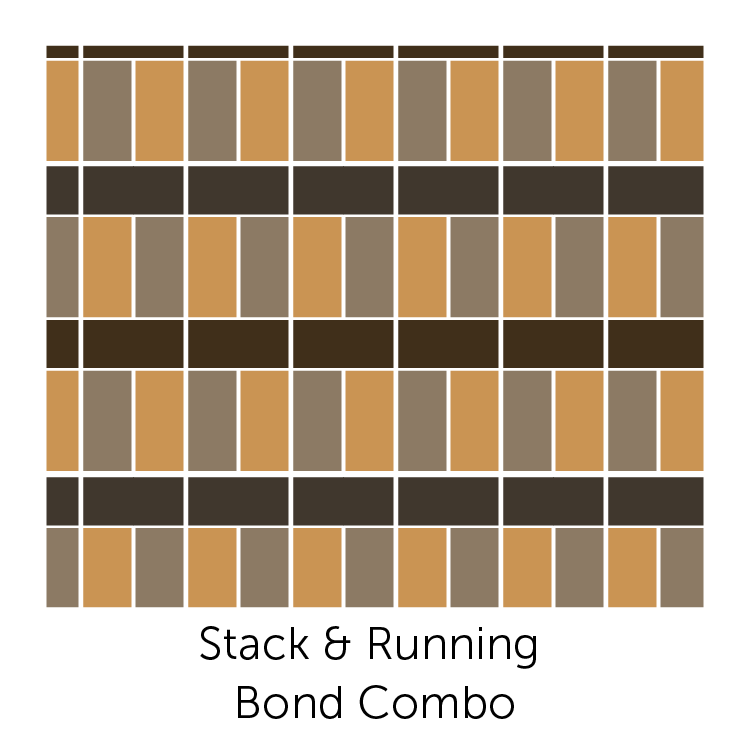
Variegated
This pattern uses three colors of brick or pavers and establishes a recurring “cross” design. This one requires excellent visual and masonry skills. Take a look at the illustration and consider calling a professional to execute the intricate design.

Brick: A Pattern of Excellence
The rich colors and amazingly diverse pattern options make brick the perfect choice for a patio surface. For more than 130 years, Acme Brick has manufactured this timeless building product that is guaranteed to last for the life of the residence. Whether it’s around the house or on the patio floor, brick is made to last.
Are you getting ready to build a new home? Don’t forget the patio! Have your architect or builder contact the professionals at Acme Brick.

